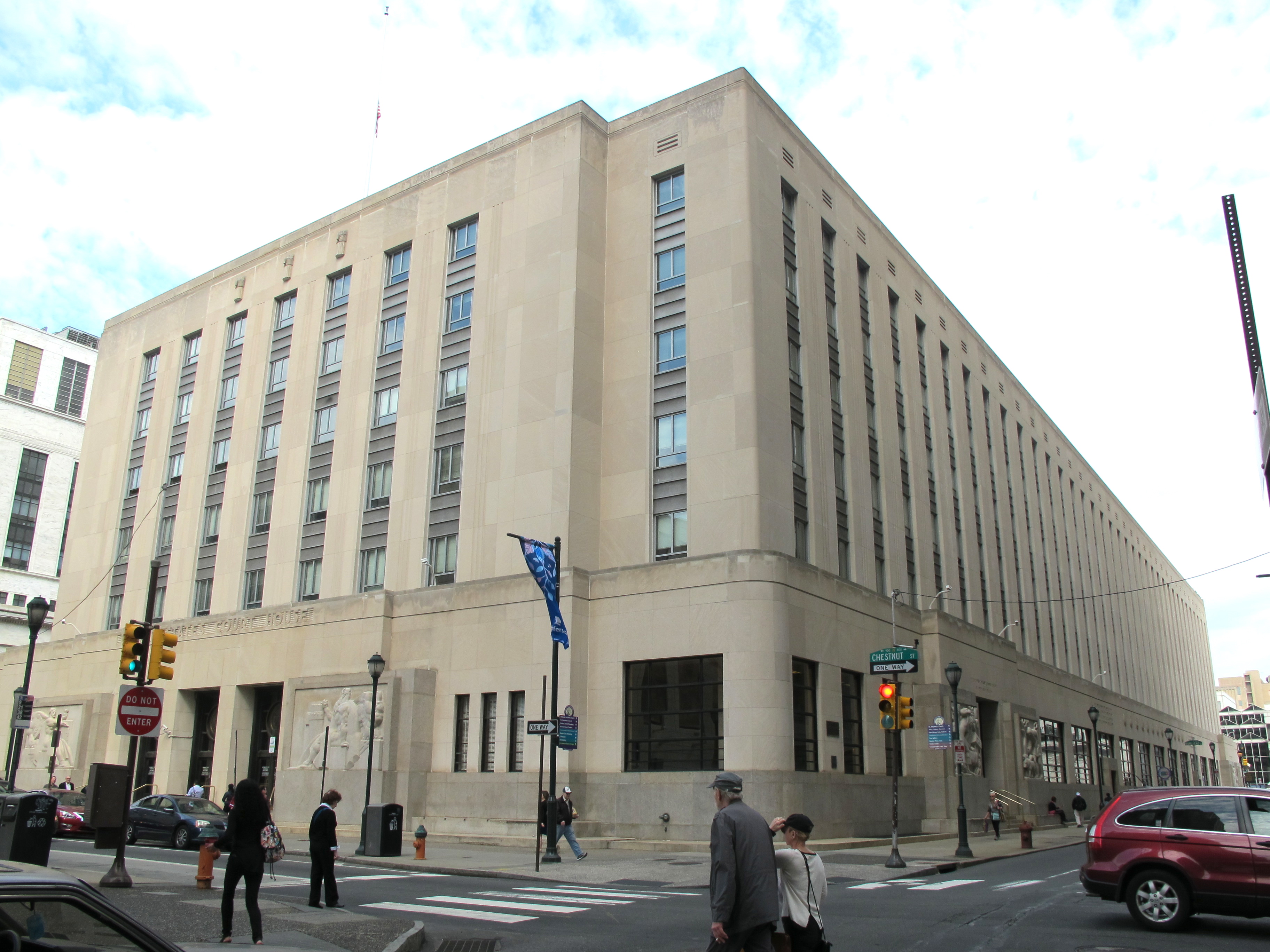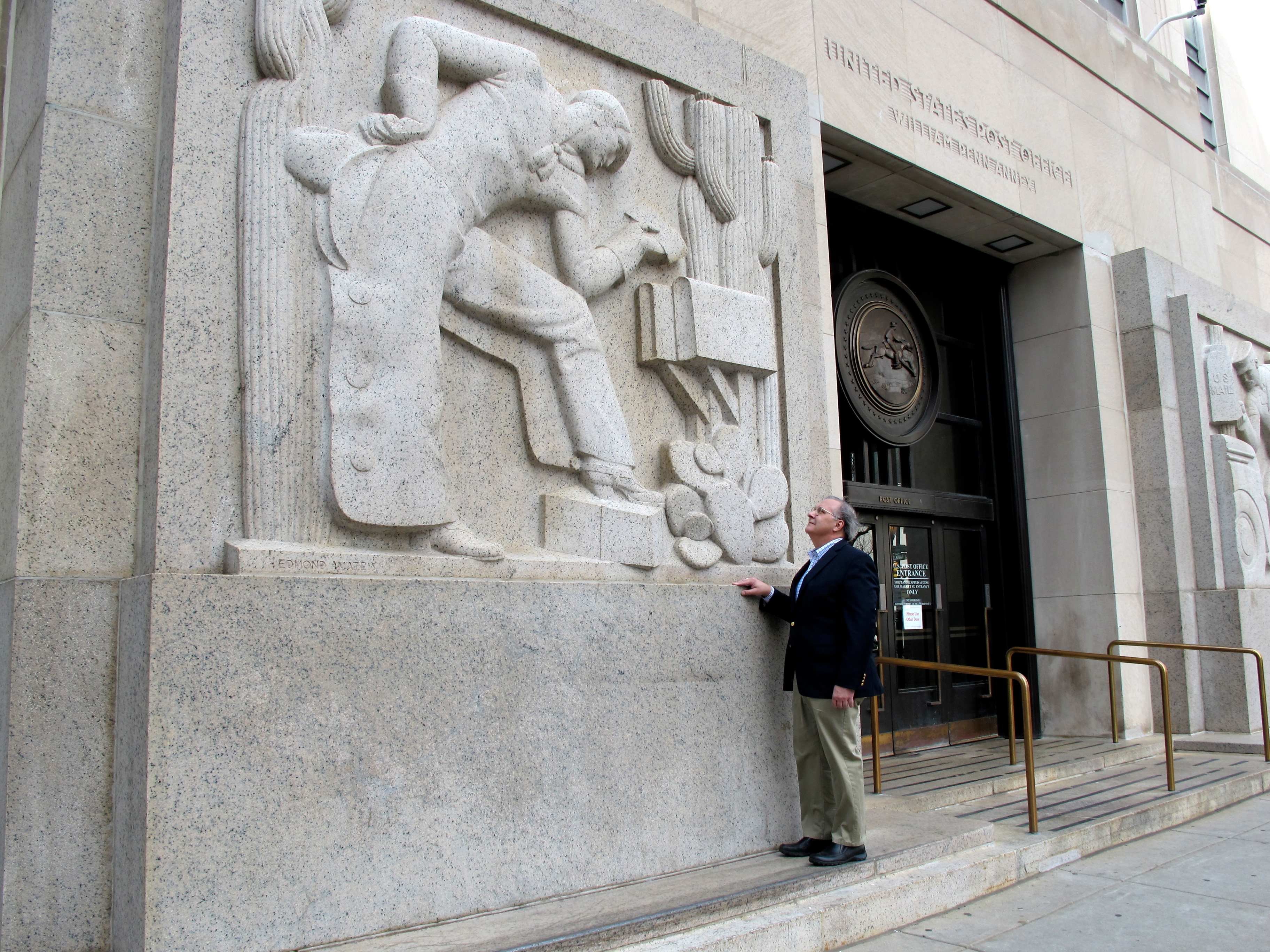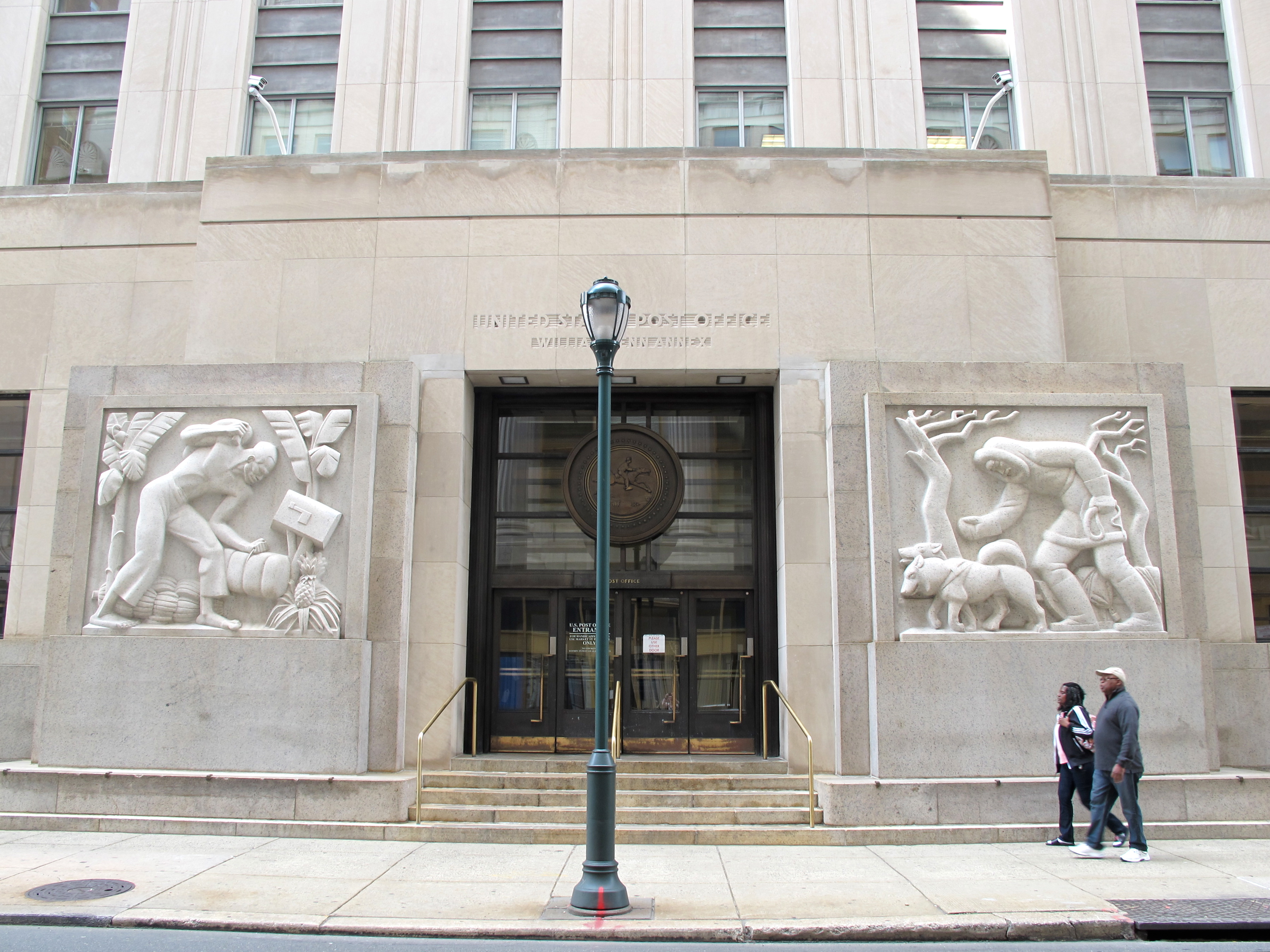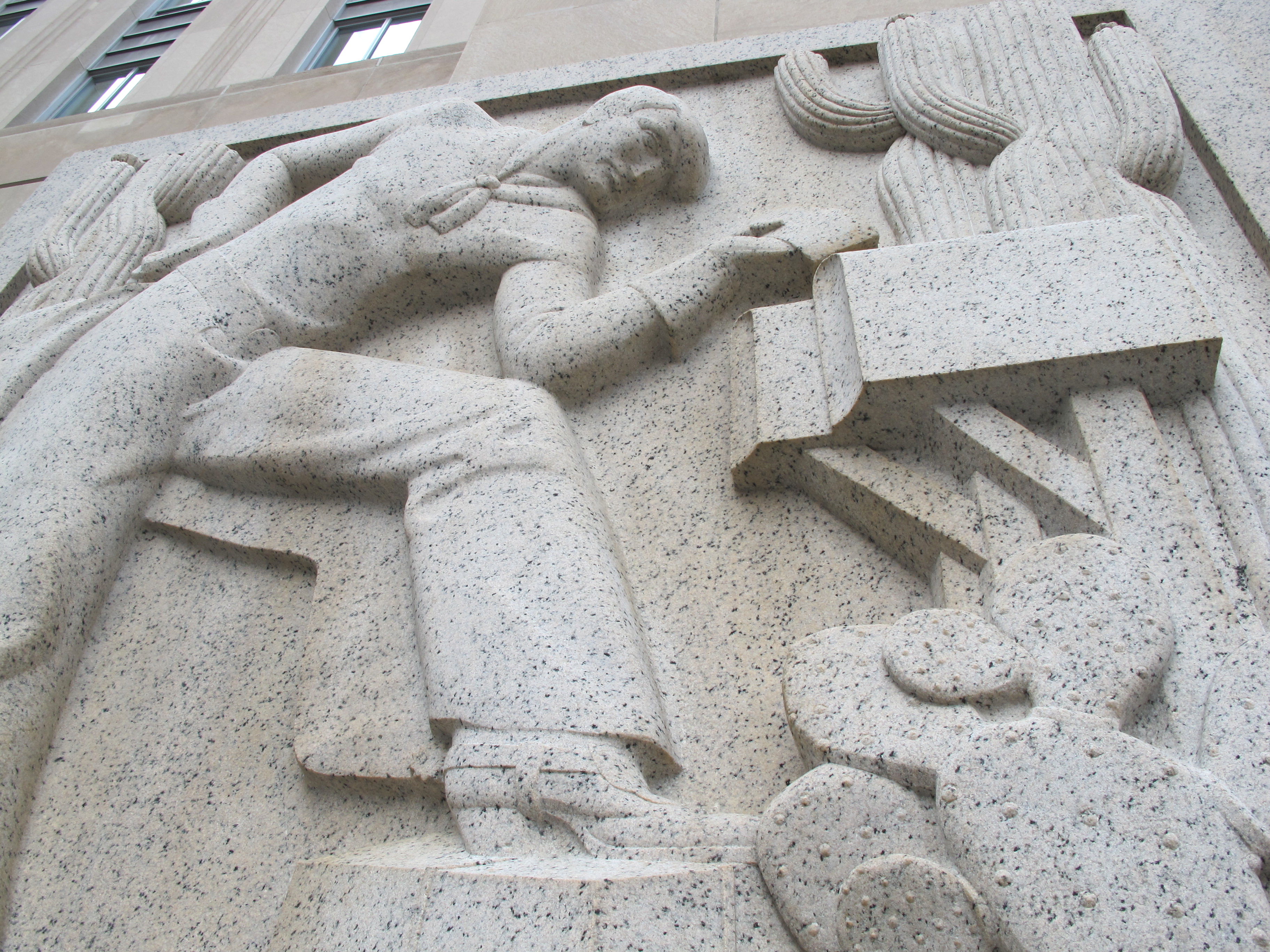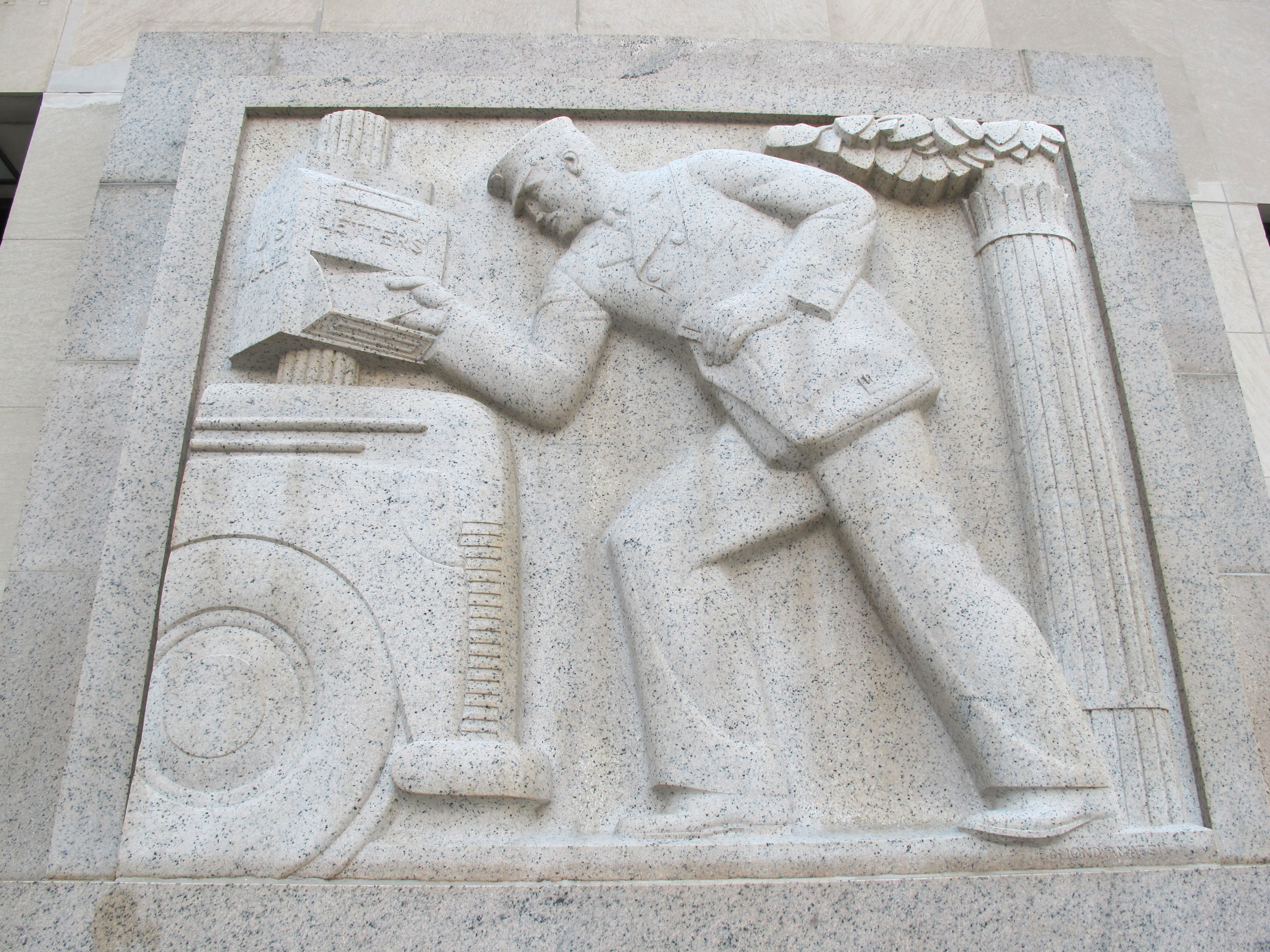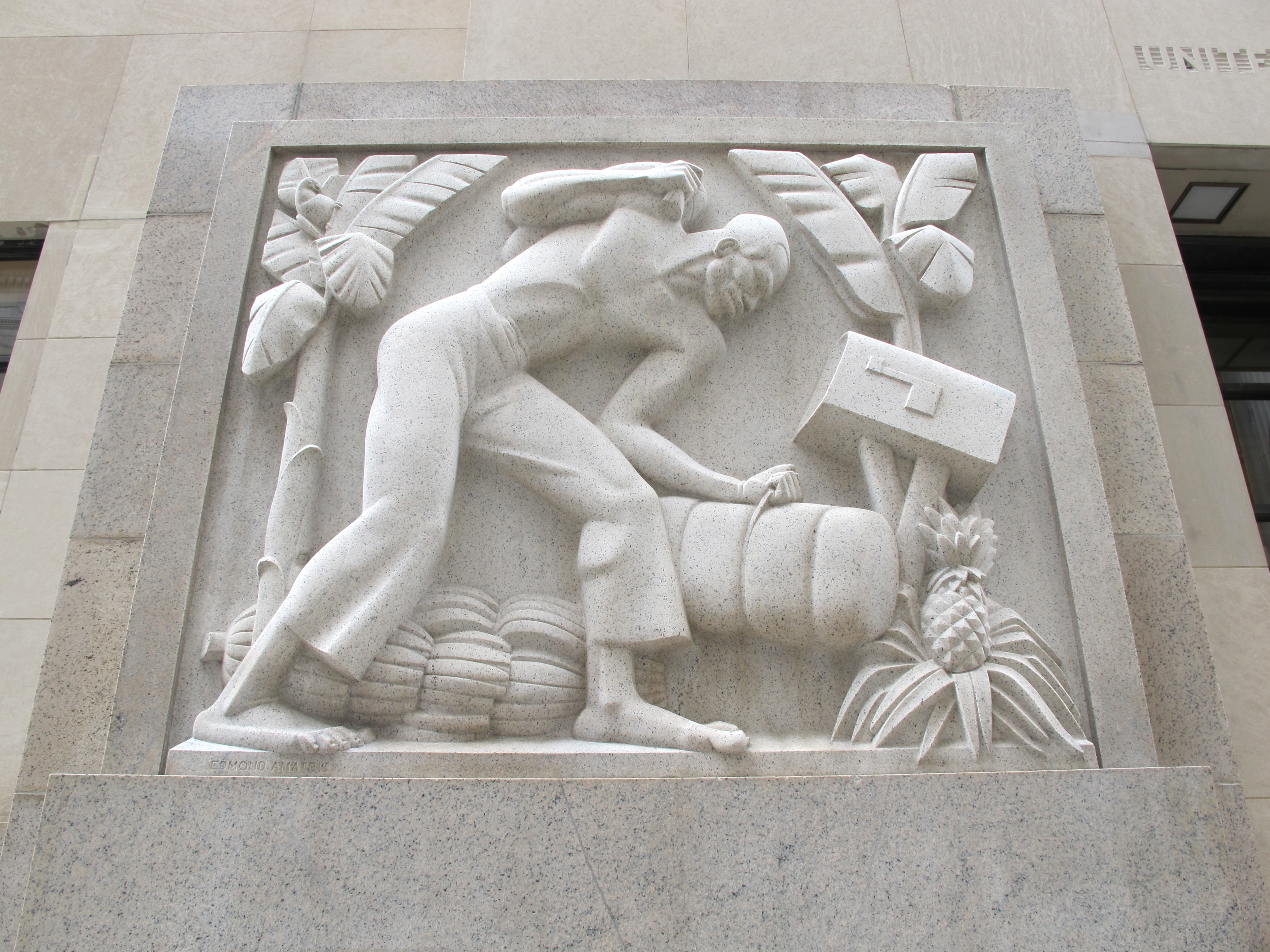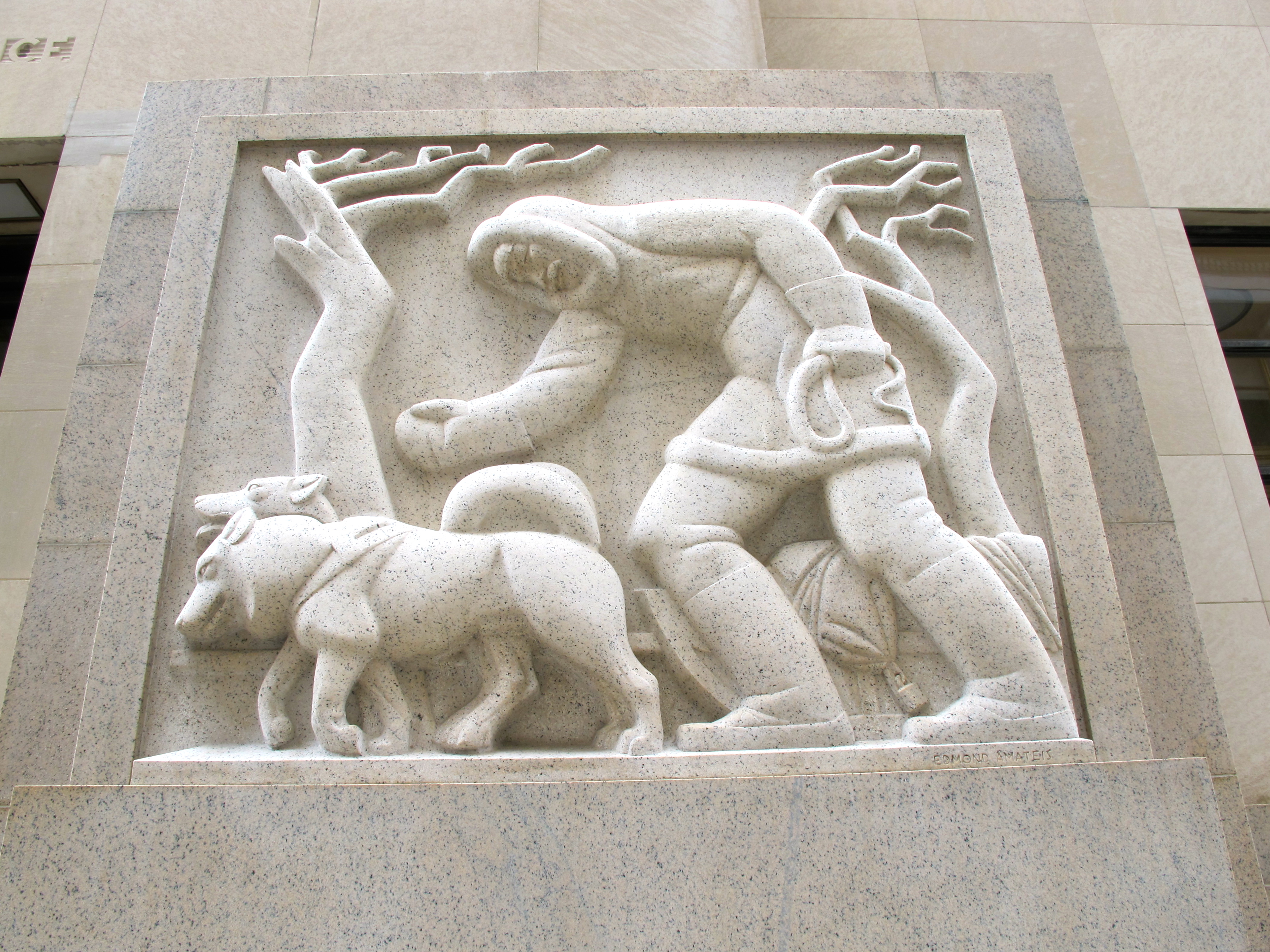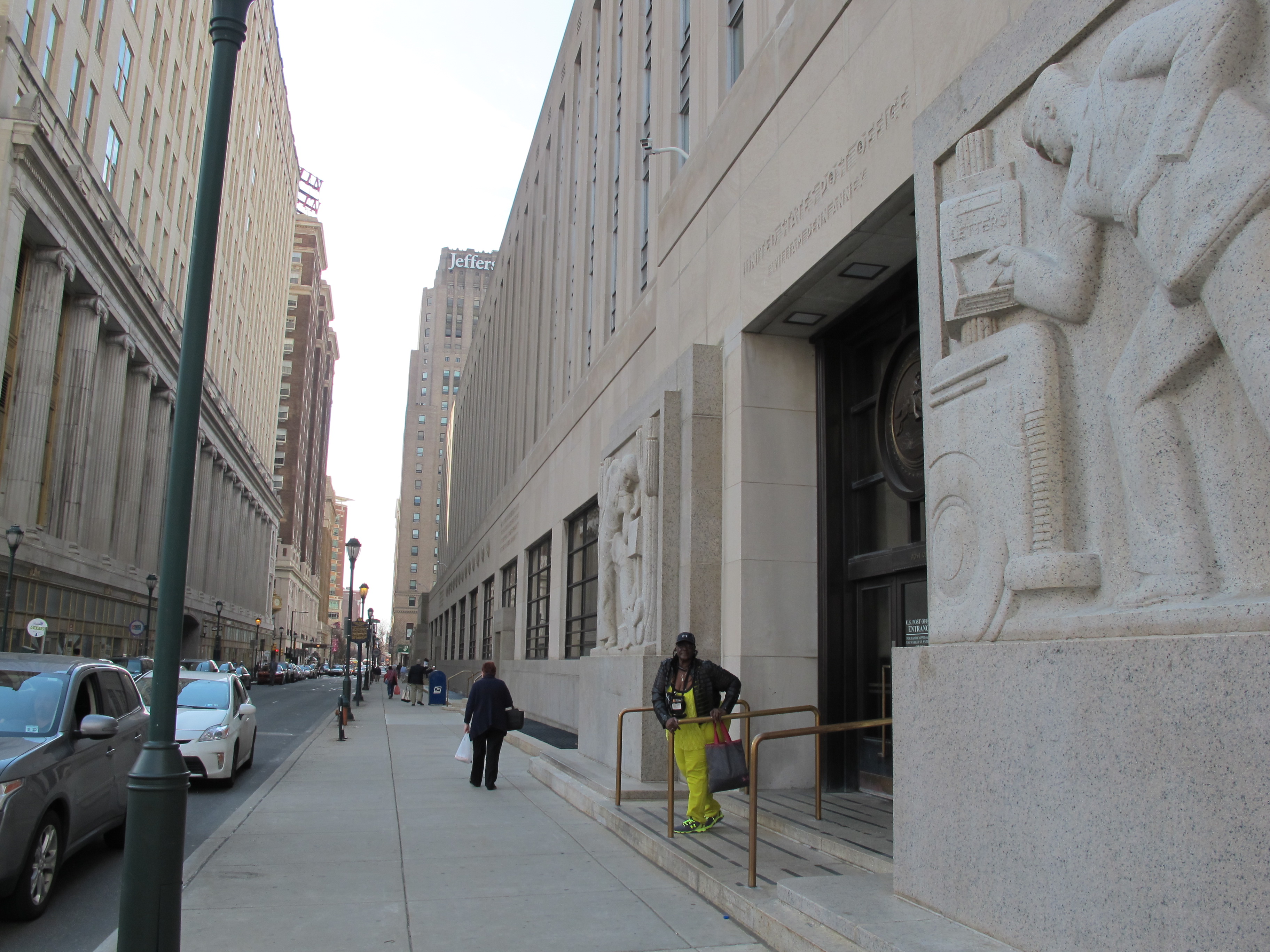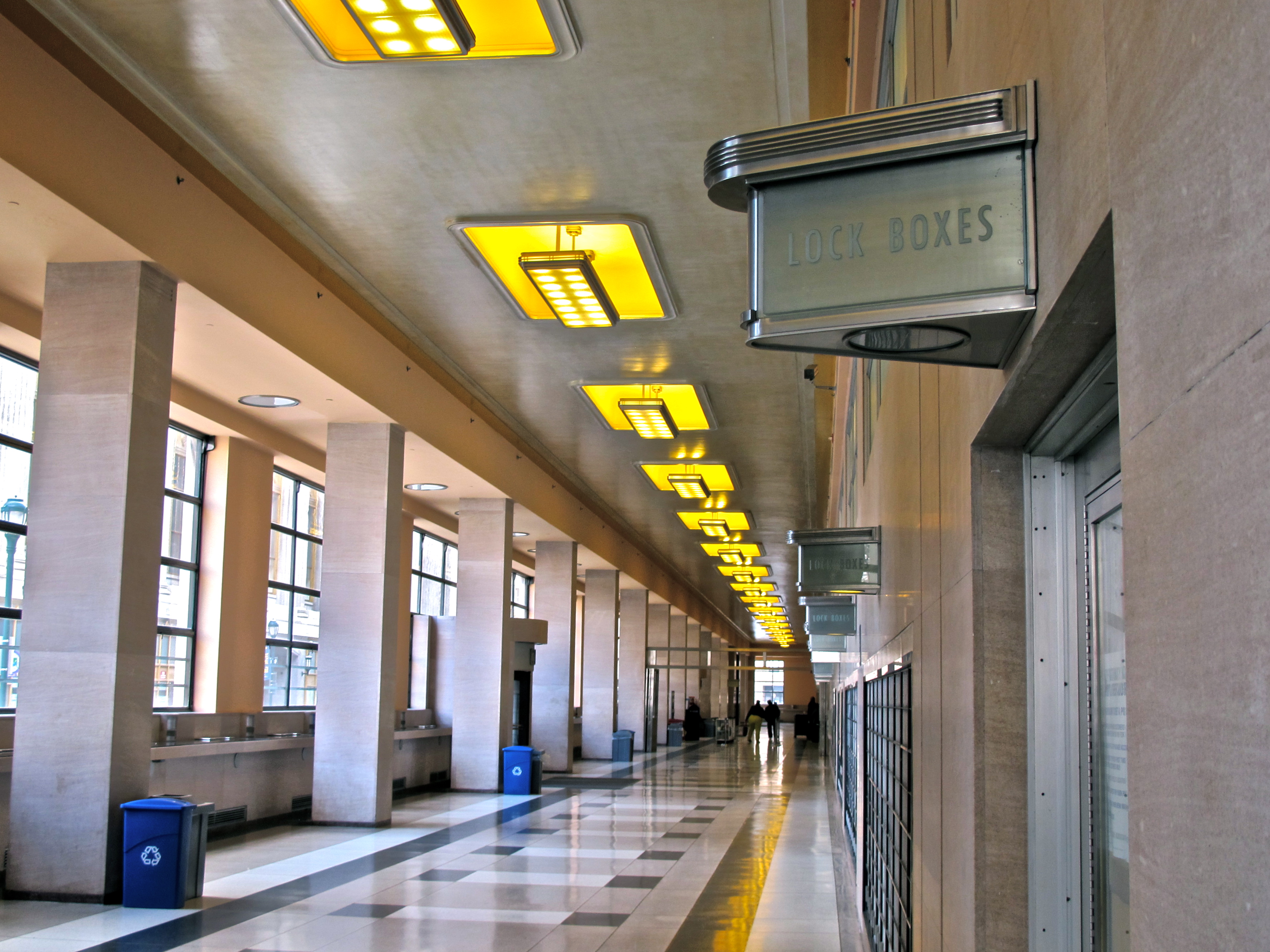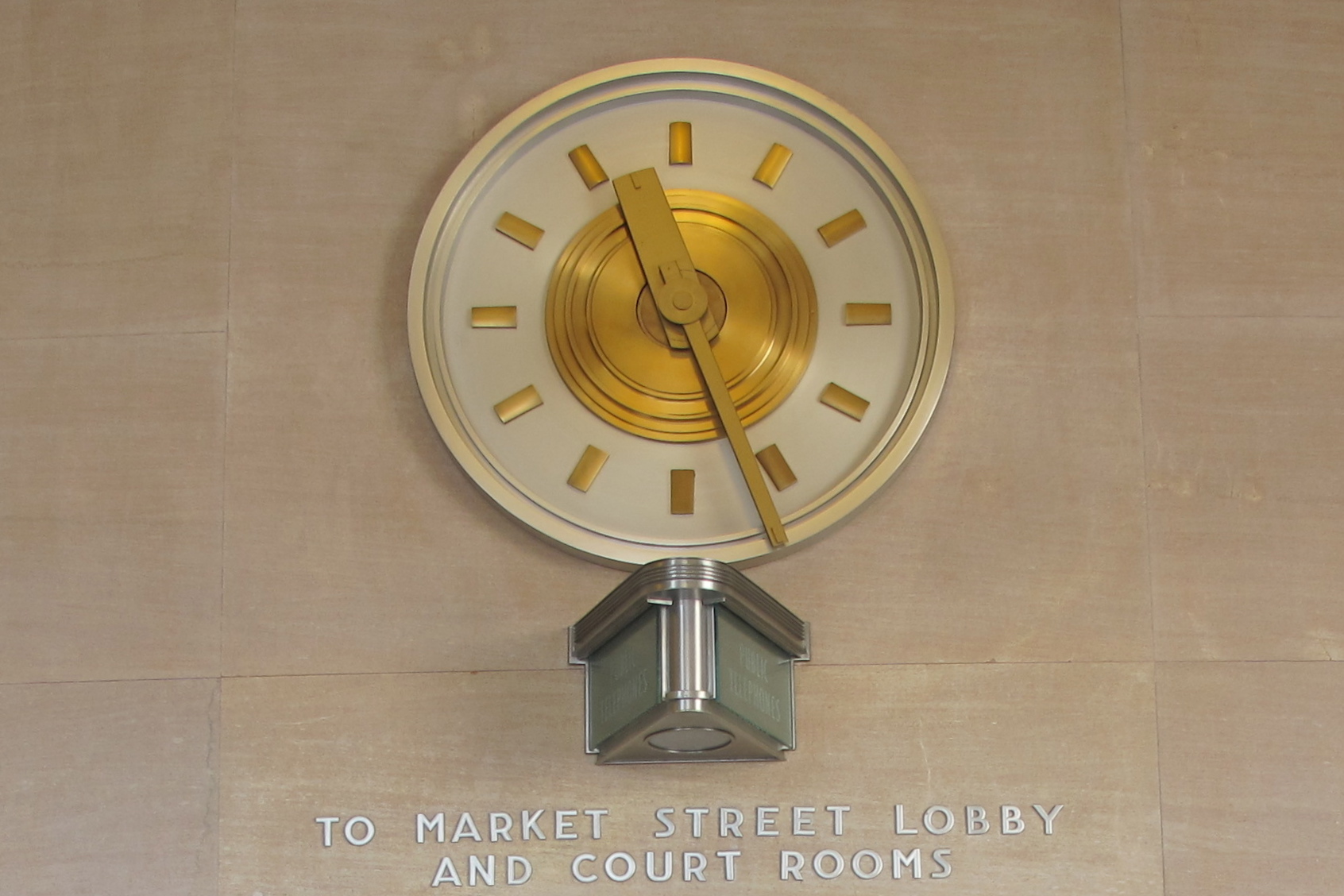Building Stories: Robert N.C. Nix Federal Building and William Penn Annex Post Office
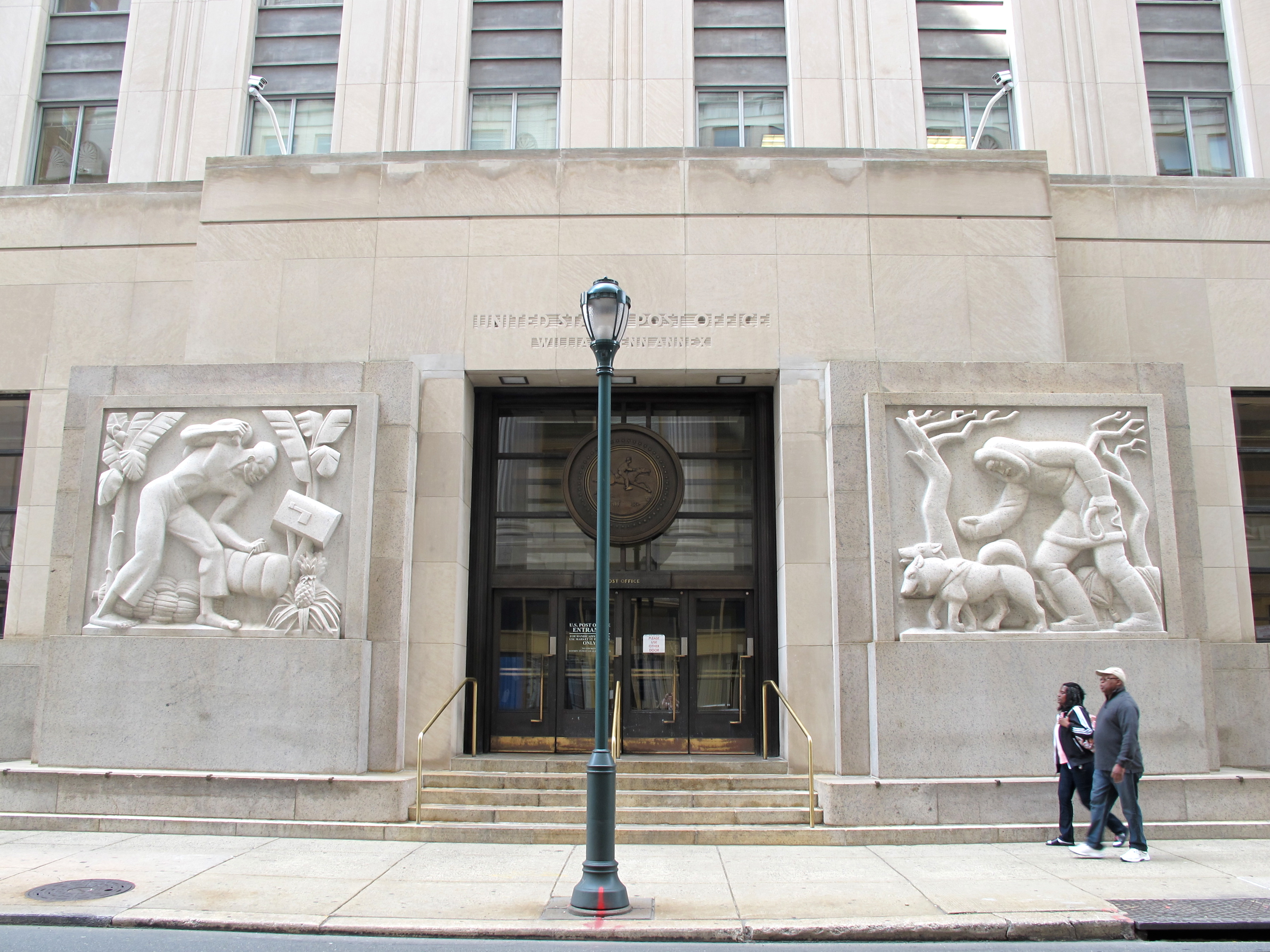
For our spring series Building Stories, we’re bringing you design postcards from around the city. We’re asking Philadelphia architects to take us to their favorite underappreciated or misunderstood buildings in Philadelphia, and explain what makes them great.
BUILDING: Robert N.C. NIX Federal Building & William Penn Annex Post office
DESIGNED BY: Harry Sternfeld, Ballinger Company
COMPLETED: 1937
LOCATION: 9th STreet between Chestnut and Market streets [MAP]
WHO: Rob Petito, Preservation ARCHITECT AT JacobsWyper Architects
WHY NIX: Legibility and clarity in design; enduring civic presence
For nearly 80 years Philadelphians have used the combined federal building and post office along Ninth Street between Chestnut and Market, passing the allegorical figures of law and justice, and letter carriers in far-flung locales carved in stone panels on its exterior. Preservation architect Rob Petito argues it’s worth pausing to take a fresh look at the Nix building – inside and out – as a gem of civic architecture.
The Robert N.C. Nix Federal Building and William Penn Annex Post Office was constructed in the 1930s as home to co-located federal courts and a major postal facility. The building was designed by Philadelphia architect Harry Sternfeld with the Ballinger Company, which has its offices on the next block of Chestnut Street. Built of Indiana limestone and pale pink Milford granite, it has simplified classical elements translated into a streamlined language that’s very much of its era.
Nix is interesting in part as a transitional building, Petito noted, bridging an era that favored more classical revival public buildings and with an emerging appetite for modernism.
“While it’s clad in a very modern streamlined vocabulary it really owes a lot to Beaux Arts planning and principles,” he said. “The internal organization is very clear, axial. Yet the façade is certainly within what would have been the mainstream of an academic Moderne.”
In addition to this dual architectural language its dual functions – courts upstairs and post office on the ground floor – are clearly legible from the exterior. As Petito notes, “The building very clearly identifies and telegraphs what it’s all about on the outside.”
Part of that clarity comes from the highly stylized bas-relief panels that flank the entrances. Surrounding the Market and Chestnut doors are allegories of law and justice by Donald DeLue signaling entrances to the courts. Along Ninth Street are Edmond Amateis’ four letter carriers in different environments – from the tropics to the desert, from the arctic to a city street.
Like the building’s exterior, the monumental public postal lobby is remarkably intact. It has a long row of east-facing windows overlooking Chestnut Street, letting in natural light, above a writing counter. Fixtures in aluminum and brass, including signs, lights, and a clock, are originals that were custom-designed by Sternfeld for the facility.
“It’s not just a simple little utilitarian space with vinyl tile flooring and plastic laminate for the counter tops. It is a very public space. It’s got good quality materials, very durable materials. It says this is an event; this is more than just coming to buy some stamps. Put your best outfit on, get dressed up and come to the Post Office.”
To Petito’s eye, the Nix building is a living expression of proud civic architecture.
WHYY is your source for fact-based, in-depth journalism and information. As a nonprofit organization, we rely on financial support from readers like you. Please give today.



